React Email 2.0
Our mission to create the best developer experience for email continues with a new major version.
We're excited to introduce React Email 2.0, featuring:
- Re-imagined preview experience
- Massive performance improvements
- New components
- Deployment to Vercel
- Better support for monorepos
Update today and check the upgrade instructions below.
npm i react-email@latest
React Email has now 114,583 weekly downloads on npm, and 10,924 stars on GitHub. We would like to thank all the 106 contributors that made this possible.
Re-imagined preview experience
The preview server is the core of the React Email experience.
It's what allows you to see how your templates in the browser without having to send tons of real emails. It's what makes the feedback cycle much faster, and the developer experience much better. That's why we decided to re-imagine it from the ground up.
New mobile preview
You can now see how your emails will look like on a small screen without having to resize the browser window or open the DevTools.
Revamped file tree
The file tree now supports subdirectories, so you can organize your emails however you want. You can also hide the file tree to get more space for the email preview.
Better user feedback
Powered by Emil's Sonner, the new preview server will show you a message after you send a test email.
Improved error handling
The new preview server will show you a message when something goes wrong, so you don't have to guess what happened.
Massive performance improvements
One thing we believe is really impactful for developer experience is how fast you can install and get things up and running.
We tested the old version of React Email (1.10.1) against the new one (2.0.0), and the results were staggering.
While testing the local server start up times with a fresh installation, the old version took ~40s for all the tests we ran. The new version, took, at most, only ~7s.
Once the initial setup is done, you should see much faster boot up times around ~1s.
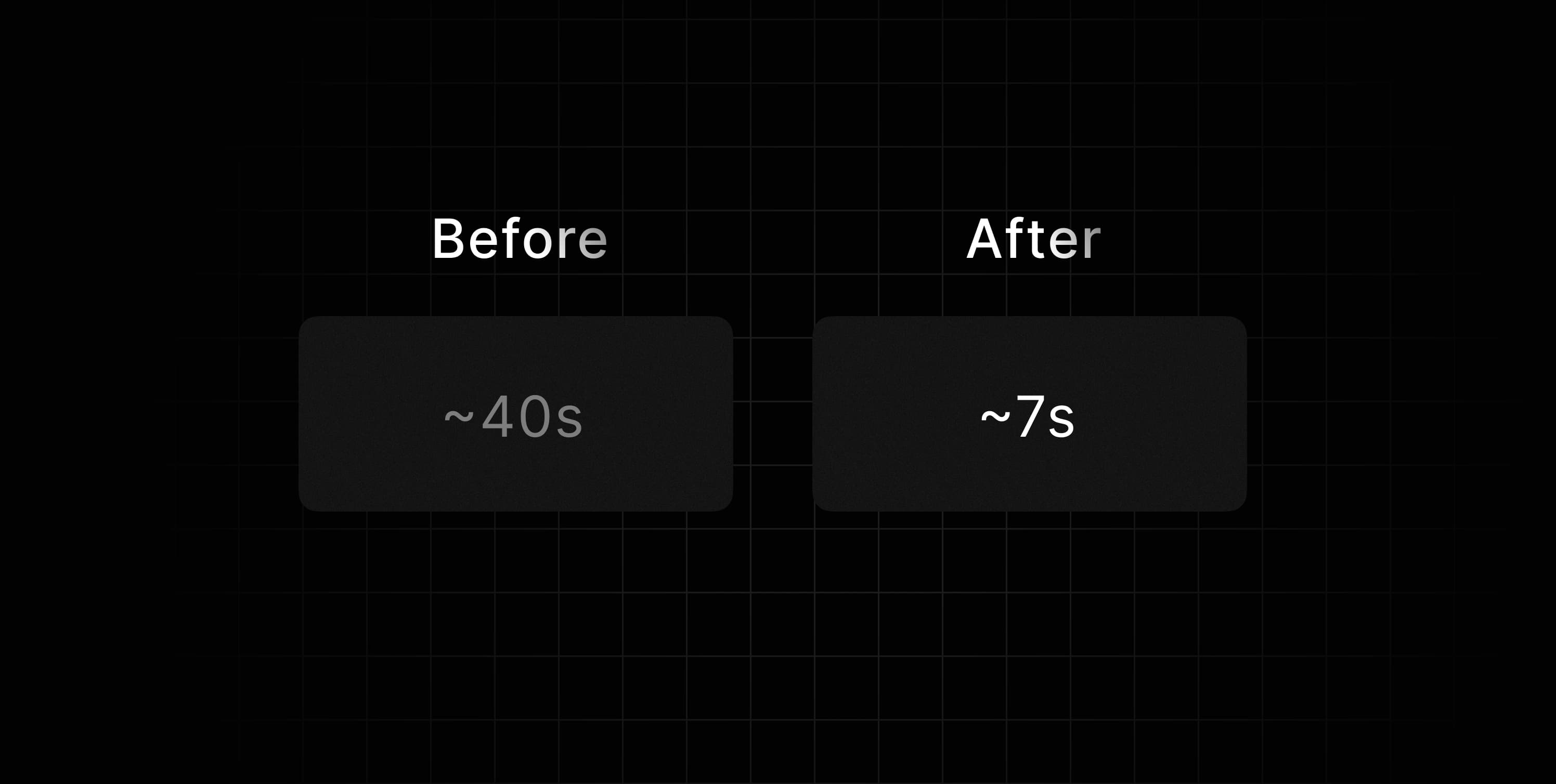
The tests were run on a Linux machine with a 3.6 GHz 6-core AMD Ryzen 5 4500 CPU, 16 GB 3600 MHz DDR4 memory, and a download speed of about 114 mbit/s.
These tests were made considering the first experience the user would have by deleting both the .react-email and .next folders.
Less time waiting for downloads and installs, means more time doing the actual work.
New components
One thing we've always hated is seeing code displayed as an image instead of actual text. It's not only annoying, but it's also not accessible. You can't copy the code, and you can't search for it.
When it comes to email, we've seen this happen a lot. That's why we decided to add new components to React Email to make it easier to display code in your emails.
Code Block
With the new code-block component, you can render code with a selected theme and syntax highlight powered by Prism.js.
import { CodeBlock, dracula } from '@react-email/components';const Email = () => {const code = `{max-width: 80vh;width: 100%;}`;return <CodeBlock code={code} lineNumbers theme={dracula} language="css" />;};
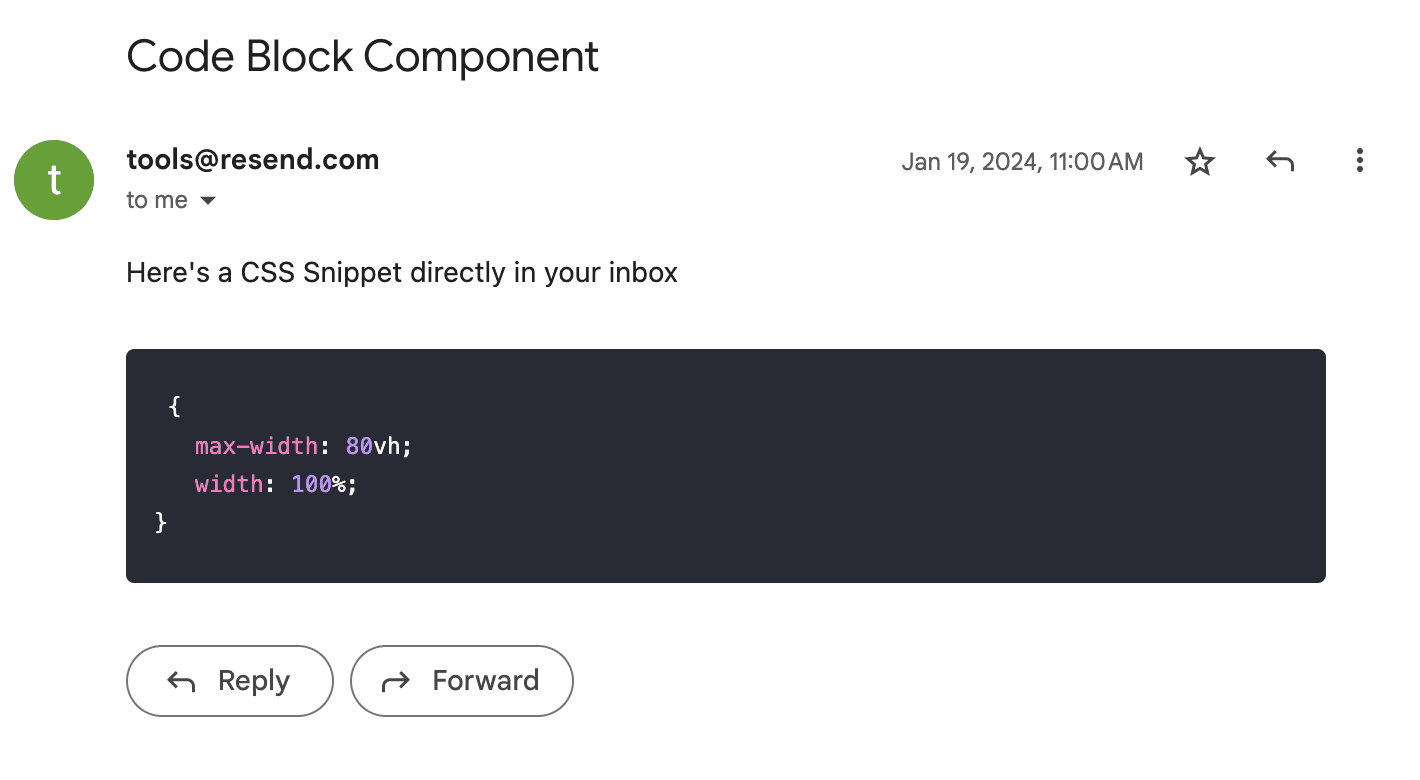
Inline Code
And with the new code-inline component, you can display a predictable inline code HTML element that works on all email clients.
import { CodeInline } from '@react-email/components';const Email = () => {return (<p>Use <CodeInline>transform</CodeInline> and{' '}<CodeInline>opacity</CodeInline> in CSS for 60fps animations.</p>);};
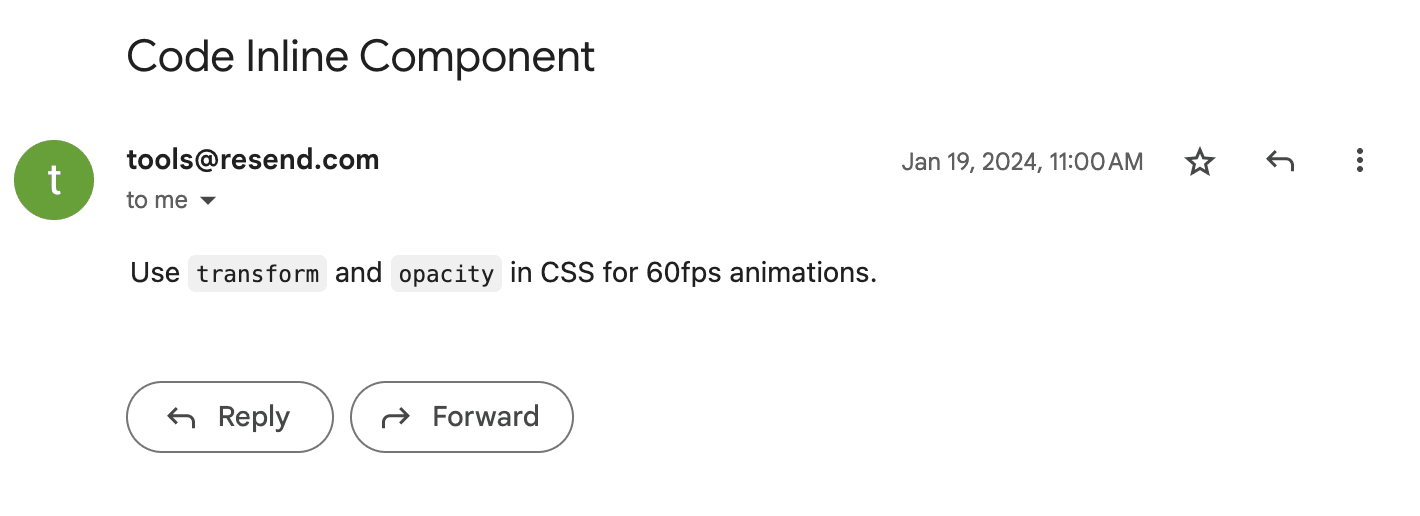
Deployment to Vercel and others
Something that we really needed ourselves was being able to deploy the React Email preview directly to Vercel, and now we have been able to do so.
This new version makes it so much more easier to deploy, not only to Vercel but any cloud provider, when compared to the previous version.
Here are the steps to deploy your React Email app to Vercel:
- Add "build" script to
./package.json
{"scripts": {"build": "email build"}}
-
Change "Framework Preset" on Vercel's project settings to Next.js
-
Change "Output Directory" to
.react-email/.next
In the end, your settings should look like this:
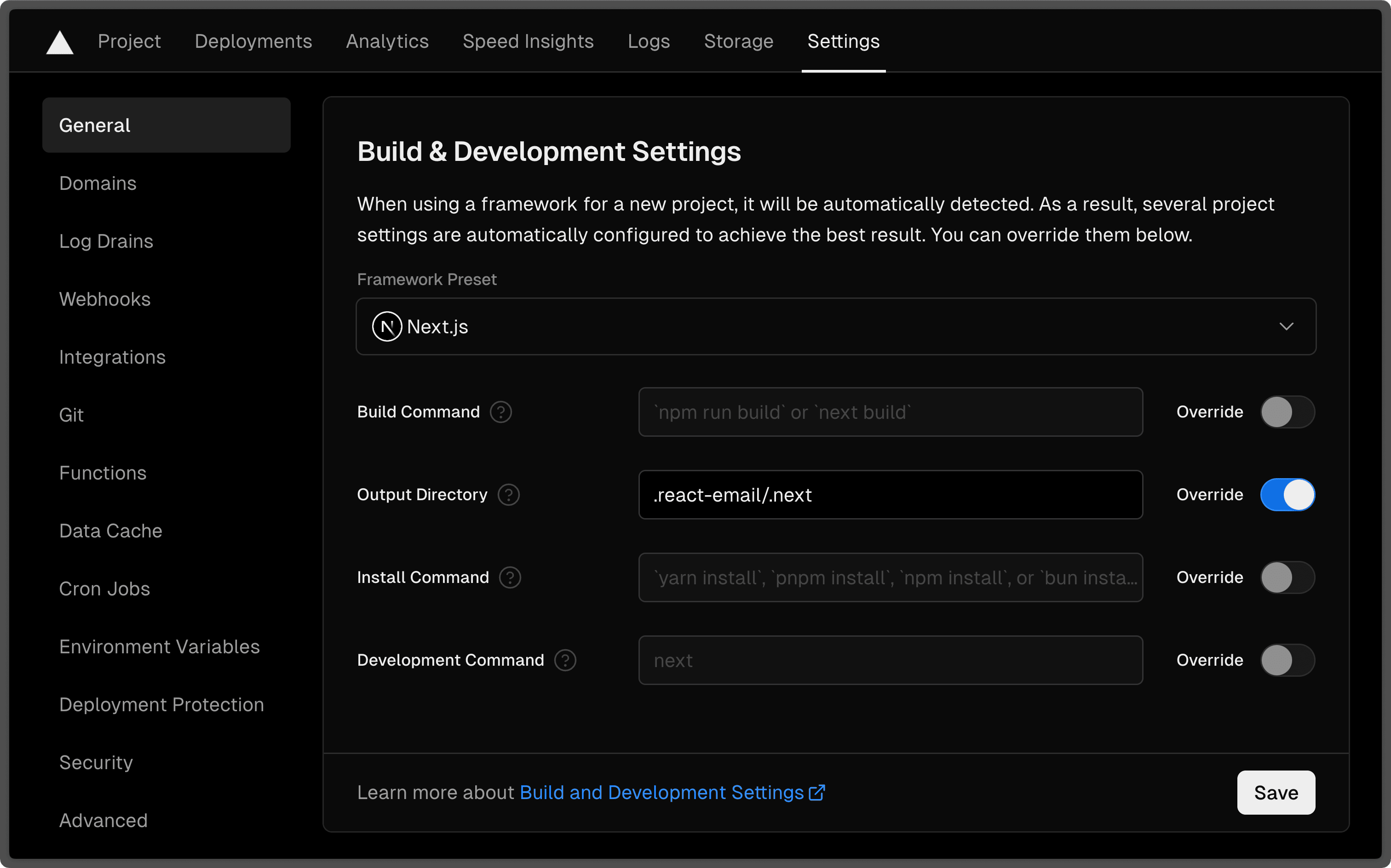
This will enable deployments to both production and preview URLs.
Better support for monorepos
React Email is now compatible with turborepo, npm, bun, pnpm, and yarn workspaces.
No more downloads, no more package manager installation hell.
To fix this, we now run esbuild on the emails. This allows for bundling which will bring along your installed dependencies, making the behavior for rendering much more predictable. It also means that if you are using code from other packages on your monorepo, it will bring it along into the preview without any hastle.
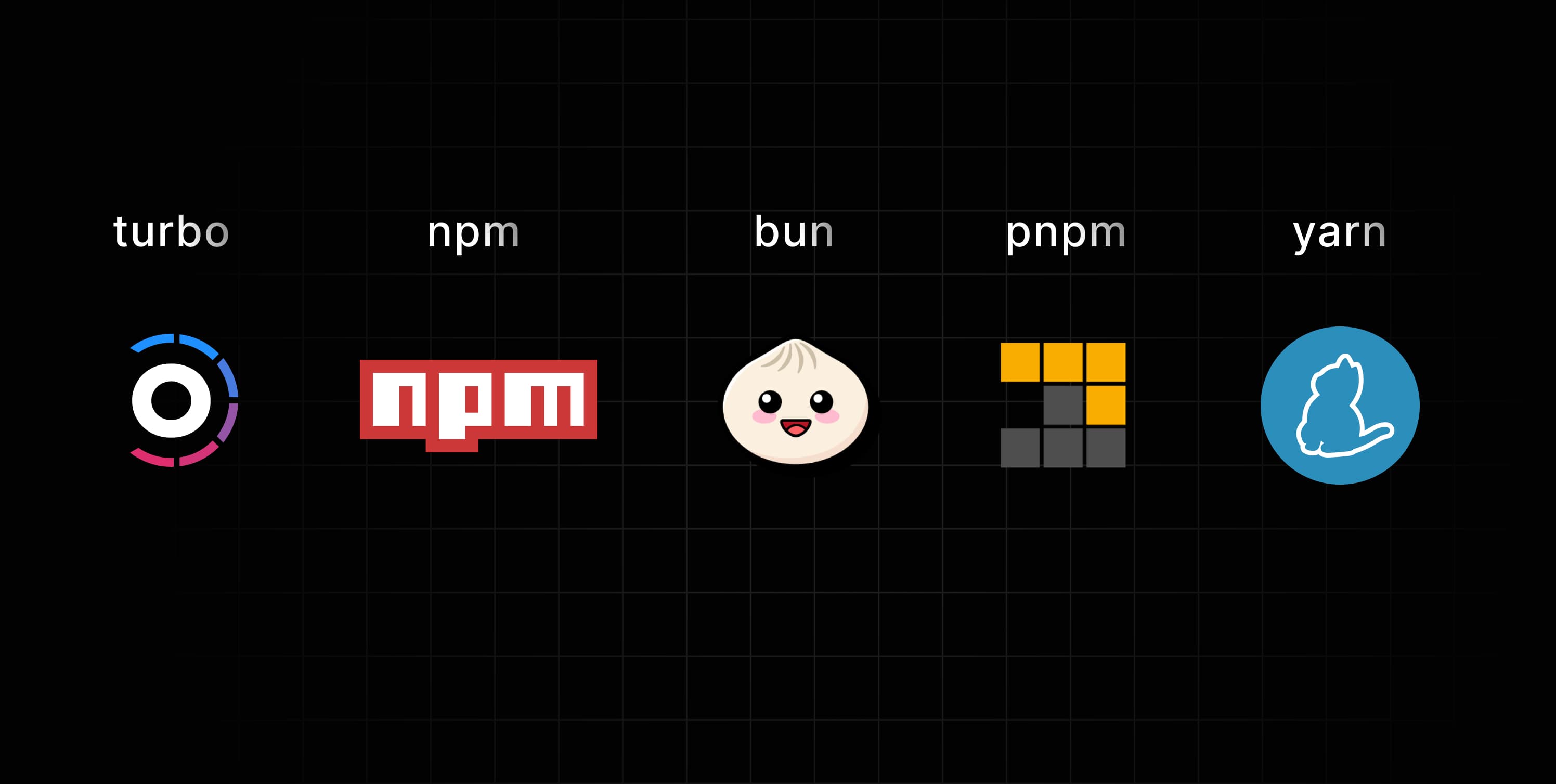
Before we would have the preview client on our repo, and then we would download it based on a tag for its version. Now, once you install the CLI globally it will come along with the preview client out-of-the-box.
Upgrade instructions
- Update your
react-emailpackage to2.0.0.
npm i react-email@latest
- Update your
@react-email/componentspackage to0.0.14.
npm i @react-email/components@latest
You can also check if you have any missing dependencies for your emails to be bundled.
Conclusion
If you want to know all details about this release, check the React Email Changelog.
If you have any problems upgrading, feel free to share on GitHub or X.